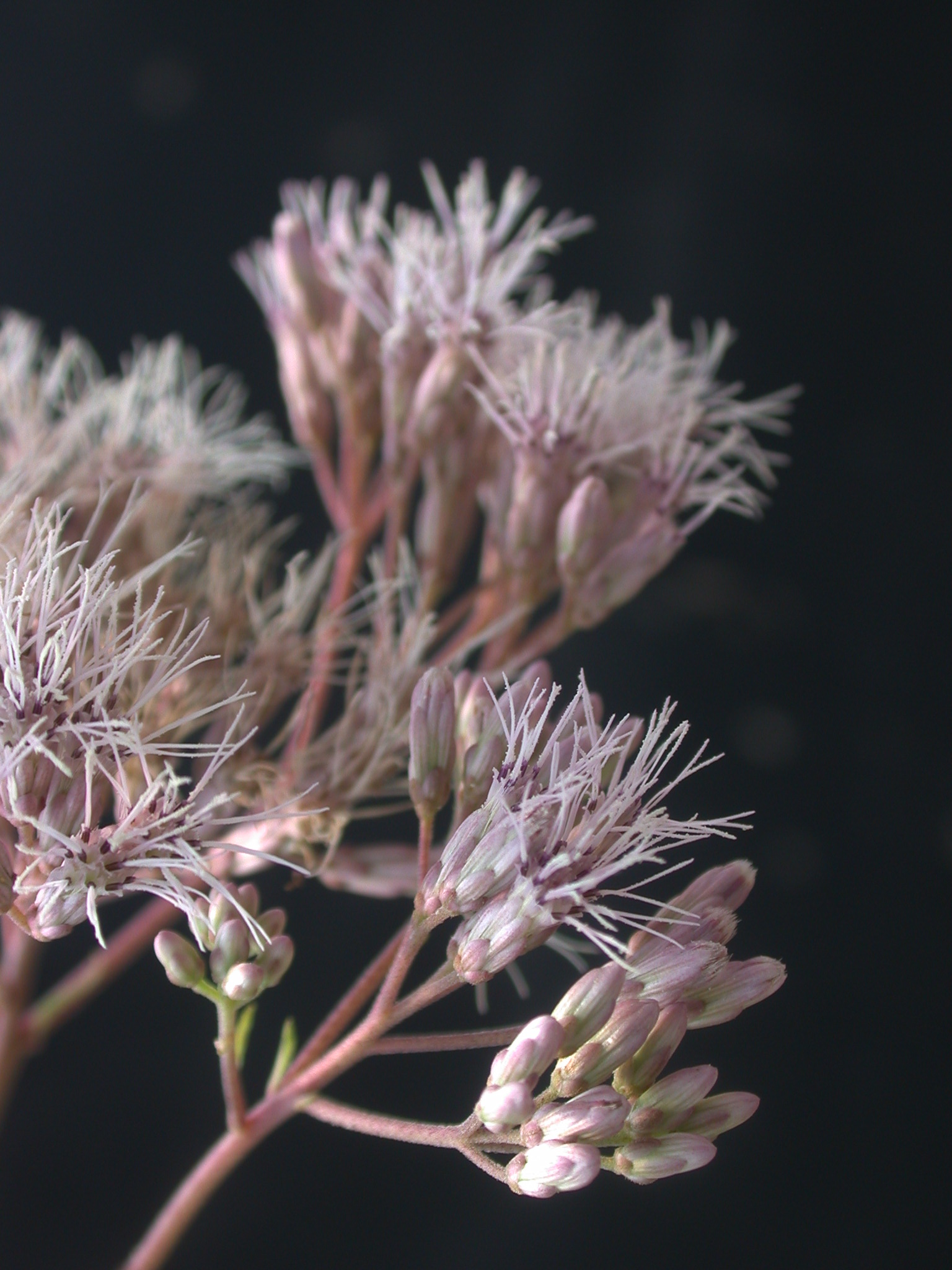Joepyeweeds (Eupatorium spp.)
Family:
Sunflower Family (Asteraceae)
Other Names:
Eutrochium eupatorium, gravel root, kidney root, marsh milkweed, quillwort, trumpet weed. HOLLOW JOEPYEWEED: Queen of the meadow, tubular joepyeweed, hollow joepyeweed, common joepyeweed.SPOTTED JOEPYEWEED: mottled joepyeweed. SWEET JOEPYEWEED: purple joepyeweed, wide-leaved joepyeweed.
Origin and Distribution:
Natives of North America, joepyeweeds are now distributed over an area extending from Canada to Florida. These weeds grow best in unattended areas on moist or somewhat dry soils. Among the various species are several that occur in Ohio including HOLLOW JOEPYEWEED (Eupatorium fistulosum), which prefers moist conditions and often grows in bottomlands or wet thickets. SPOTTED JOEPYEWEED (Eupatorium maculatum) also grows in Ohio on moist soils. It frequently establishes in marshes, wet meadows, swampy woods, roadside ditches, lakeshores, stream edges, bogs, and other wet places. SWEET JOEPYEWEED (Eupatorium purpureum) grows in dry areas such as upland woods and fields.
Plant Description:
Joe-Pye weeds are perennial herbs with leaves in whorls (3 to 6 leaves per node) and purplish flowers in terminal clusters. Stems of HOLLOW JOEPYEWEED are mostly hollow, there are usually 4 to 6 leaves in a whorl, and flower heads consist of fewer than 8 purple tubular flowers. Flower heads are arranged in a domed terminal cluster. Stems of SPOTTED JOEPYEWEED are purple or purple-spotted, there are 5 leaves in a whorl, and flower heads are pinkish-purple consisting of between 8 and 22 tubular flowers. Flower heads are arranged in flat-topped terminal clusters. SWEET JOEPYEWEED foliage smells like vanilla when crushed, stems are green with purplish nodes, there are 3 or 4 leaves in each whorl, and flower heads are dull pink consisting of fewer than 8 tubular flowers. Flower heads are arranged in dome-shaped terminal clusters. Joe-Pye weeds reproduce by rhizomes and seeds.
Root System:
The root systems includes spreading rhizomes (horizontal underground stems).
Stems:
HOLLOW JOEPYEWEED stems are hollow, often hairy, and usually unbranched below. SPOTTED JOEPYEWEED stems are purple or spotted with purple, erect, ridged, and usually unbranched below. SWEET JOEPYEWEED stems are greenish with purple at or above the nodes and usually unbranched below.
Leaves:
HOLLOW JOEPYEWEED leaves are positioned on the upper portion of the stem near the base of the flower heads are typically opposite (2 leaves per node). All other leaves are borne on the stem in whorls (4 to 6 leaves per node) and are generally serrated, oblong, and tapered. SPOTTED JOEPYEWEED leaves are positioned on the upper portion of the stem near the base of the flower heads are typically opposite (2 leaves per node). All other leaves are borne on the stem in whorls (5 leaves per node). Leaves are 2 1/2 to 8 inches long, thick, broadly ovate, and tapering into a long tip at the apex and a stalk (petiole) at the base. Leaf edges have teeth that vary from sharp and serrate to shallow and rounded. SWEET JOEPYEWEED leaves are positioned on the upper portion of the stem near the base of the flower heads are typically opposite (2 leaves per node). All other leaves are borne on the stem in whorls (3 or 4 leaves per node). Leaves are also serrated, oblong, and tapered.
Flowers:
HOLLOW JOEPYEWEED flower heads consist of fewer than 8 purple tubular flowers. Flower heads are grouped in slender, dome-shaped, terminal clusters. With SPOTTED JOEPYEWEED each pinkish-purple flower head is about 1/3 inch wide and consists of more than 8 and fewer than 22 tubular flowers. Between 9 to 15 flower heads are densely packed into compact, flat-topped, 4- to 5 1/2-inch-wide terminal cluster. SWEET JOEPYEWEED flower heads consist of fewer than 8 dull-pink tubular flowers. Flower heads are grouped in dome-shaped terminal clusters.
Fruits and Seeds:
HOLLOW JOEPYEWEED have single-seeded fruits that are ribbed, yellow to almost black, and tipped with purplish bristles (pappus). SPOTTED JOEPYEWEED have single-seeded fruits that are linear, angled, black or dark brown, and tipped with bristles (pappus). SWEET JOEPYEWEED have single-seeded fruits that are angular, almost black when mature, and tipped with bristles (pappus).
Similar Species:
Eupatorium is a diverse genus with more than 50 species occurring in North America. Joepyeweeds can be distinguished from these other related species, which include bonesets, white snakeroot (Eupatorium rugosum), and thoroughworts, by the whorled leaves and purple flowers.
Biology:
Joepyeweeds flower from August to September. Many insects, especially butterflies and bees, are attracted to the small tubular flowers. To control Joepyeweeds, plants should be mowed close to the ground several times during the season to prevent seed formation. Repeated cultivation and improved drainage are other measures that may help to control these weeds.
Toxicity:
None known.
Facts and Folklore:
There are more than forty species in this genus and many have medicinal uses; early American colonists used Joepyeweeds to treat various ailments and, according to folklore, an Indian called 'Joe Pye' used the plant to cure fevers.
Joepyeweeds can grow up to 12 feet tall making them one of America's tallest herbs.
'Sweet joepyeweed' was given its common name because if bruised, the foliage smells like vanilla.
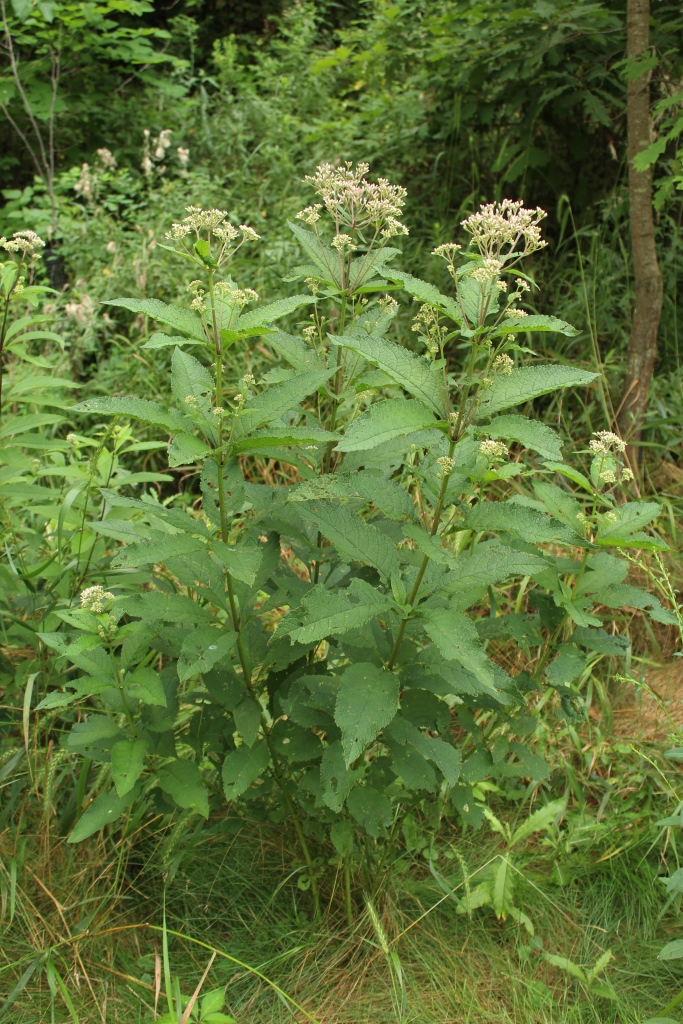
Axillary buds at mid-stem.
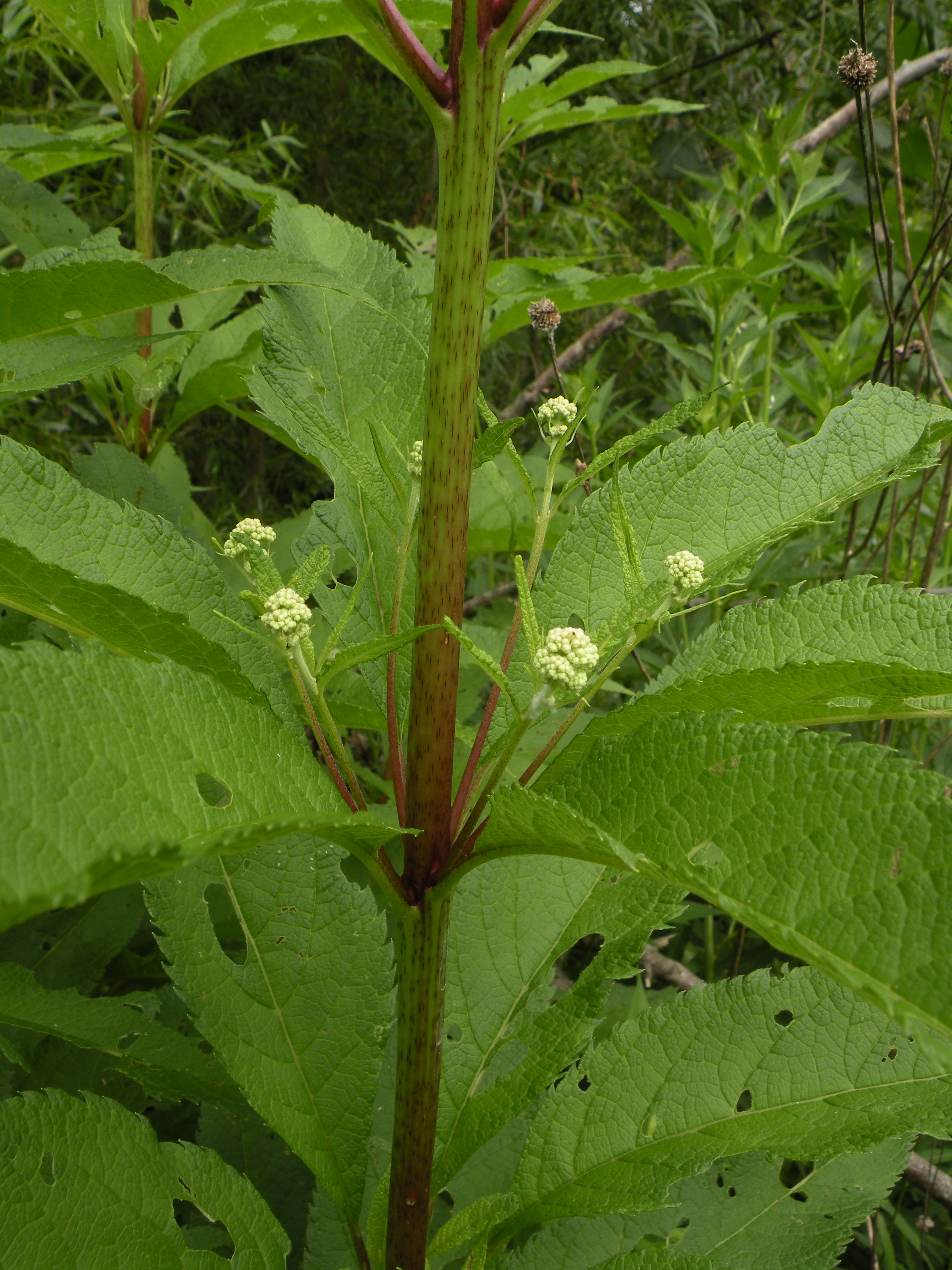
Joepyeweed stem.
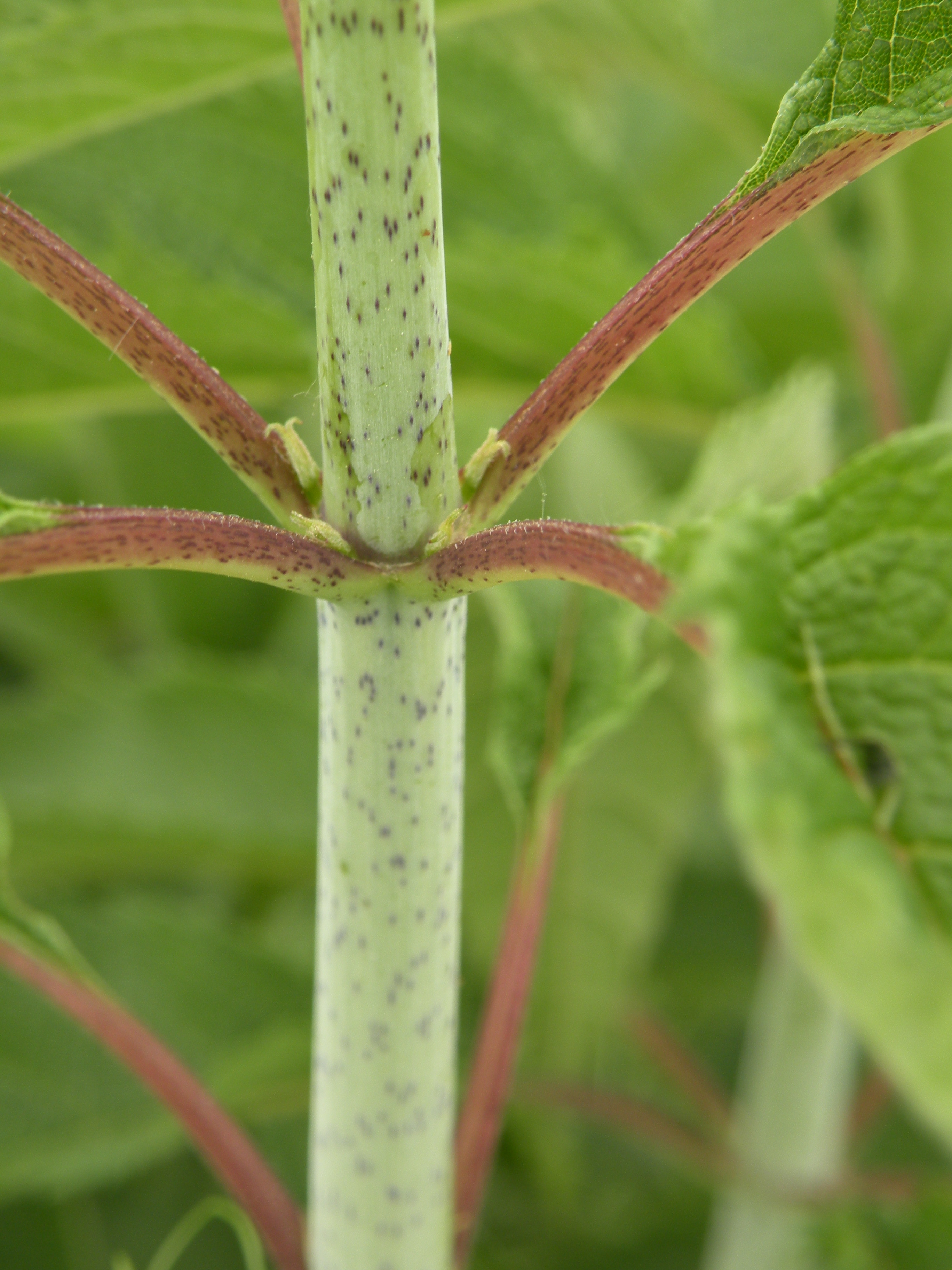
Joepyeweed seeds with attached pappus.
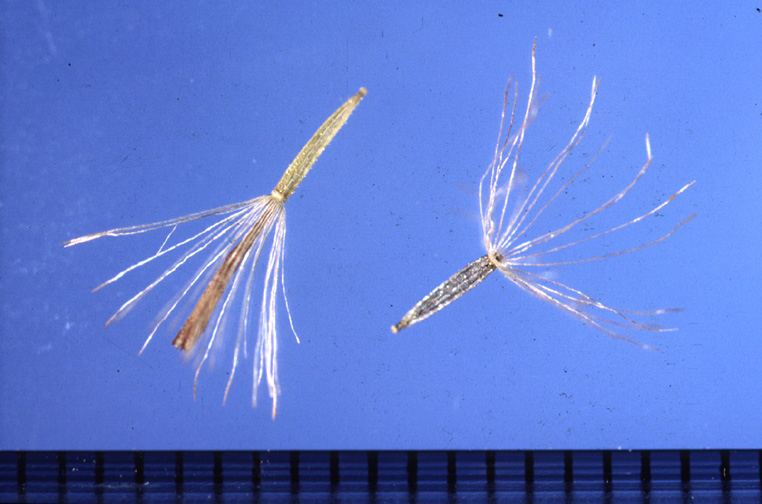
Joepyeweed flowers.
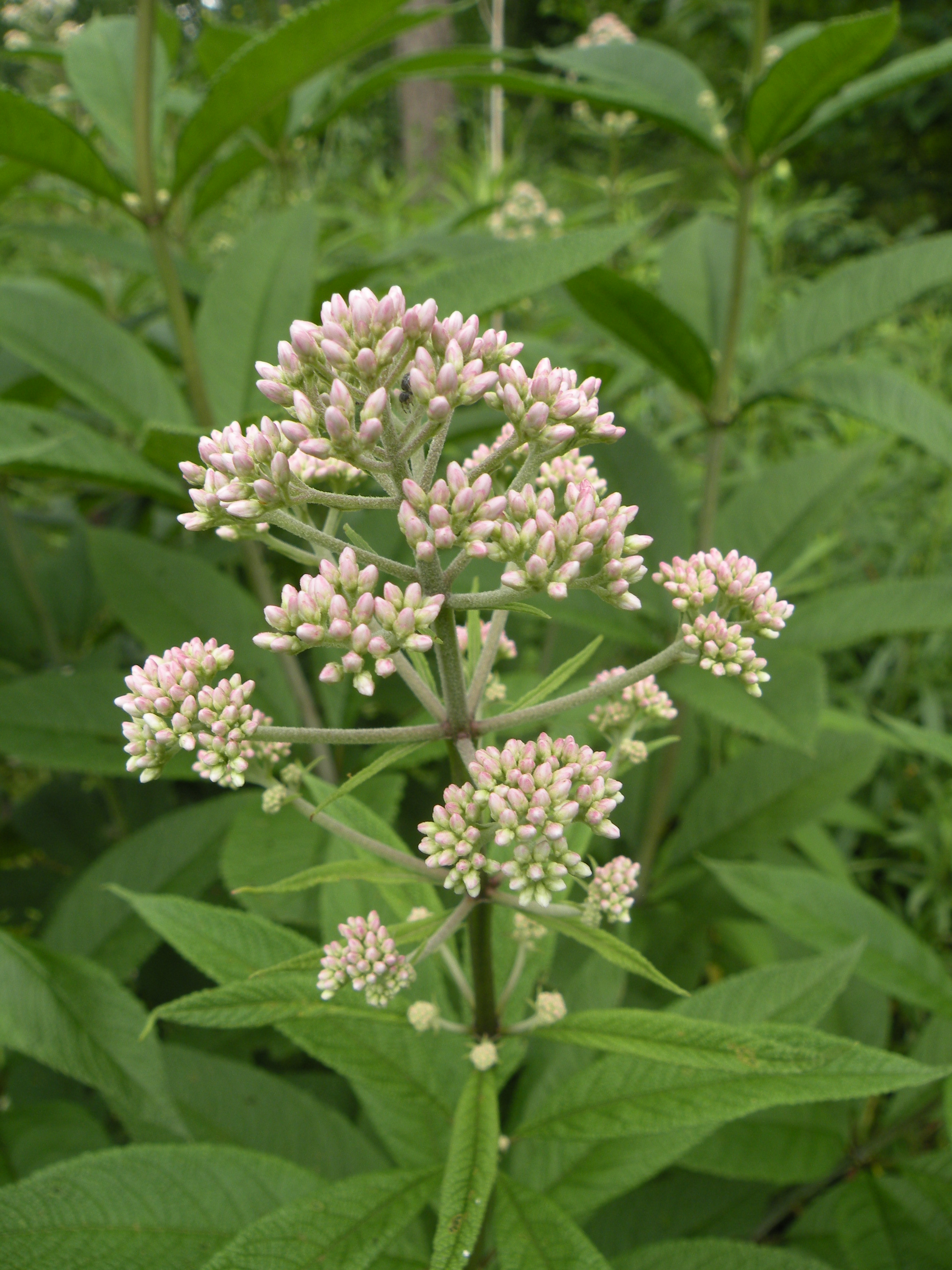
Joepyeweed leaf.
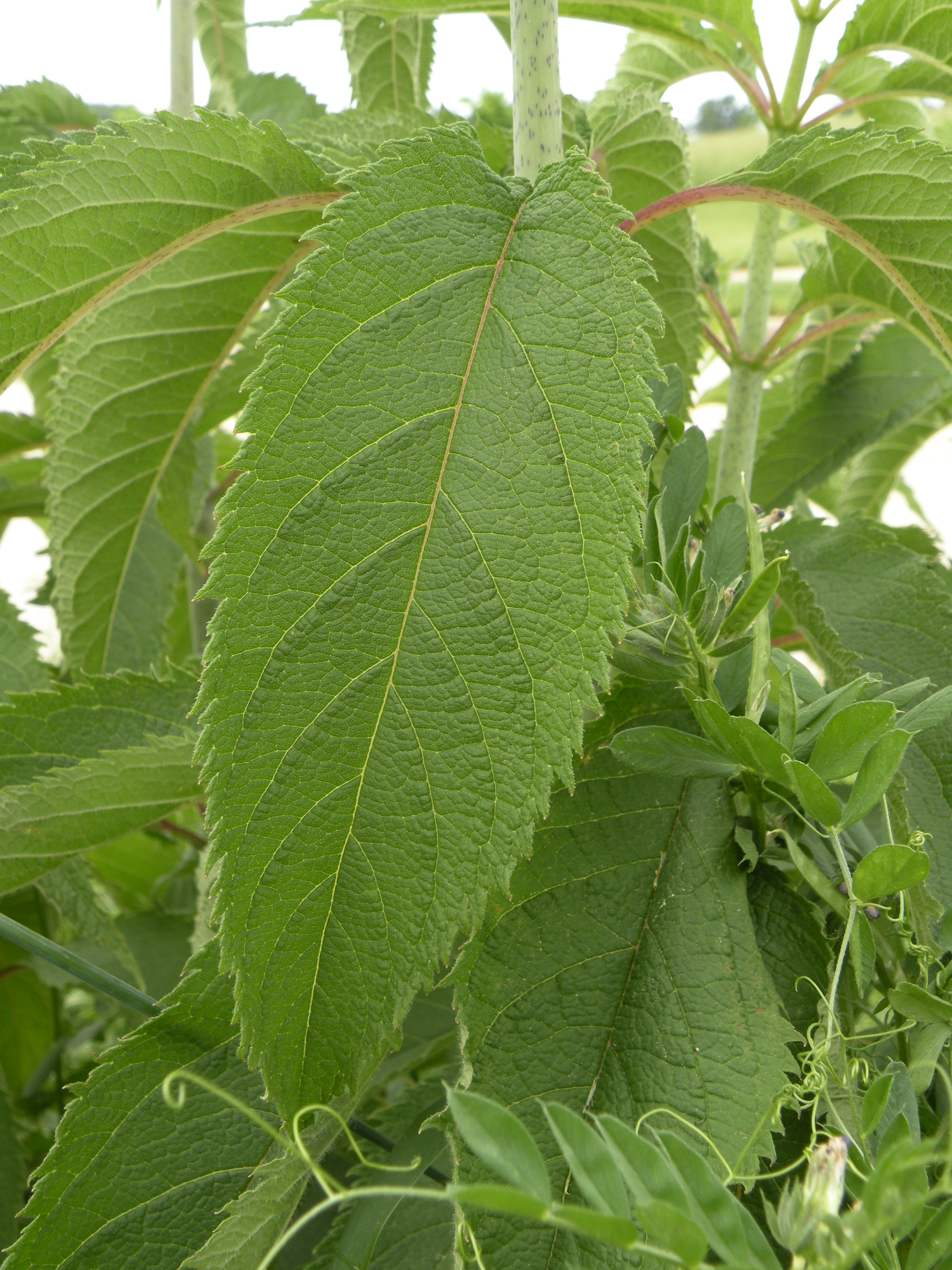
Joepyeweeds in bloom.
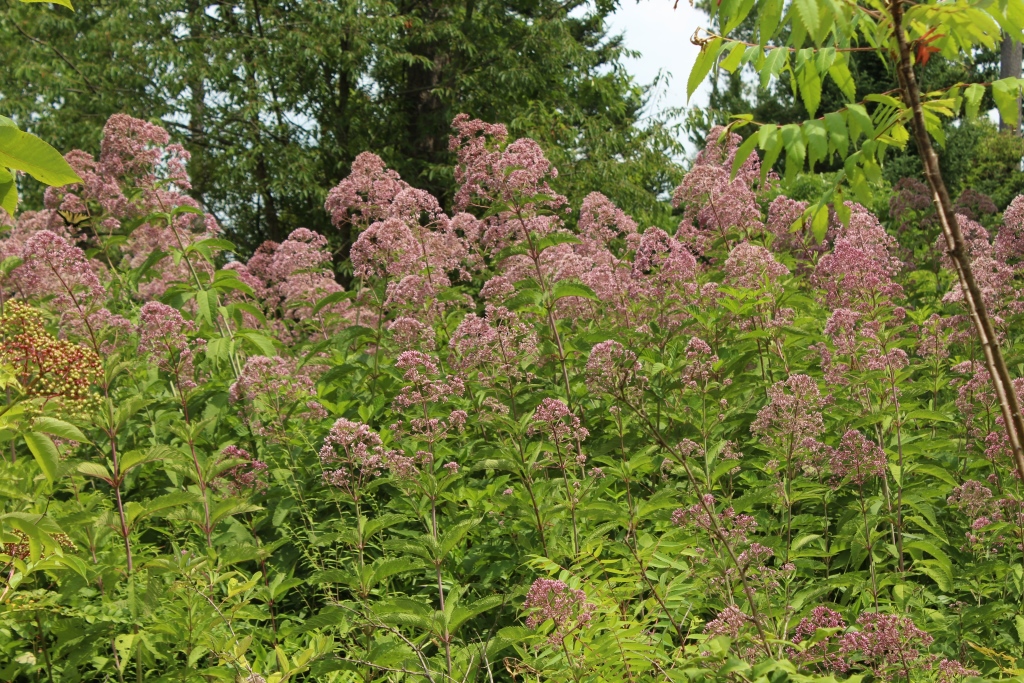
Joepyeweed flowers.
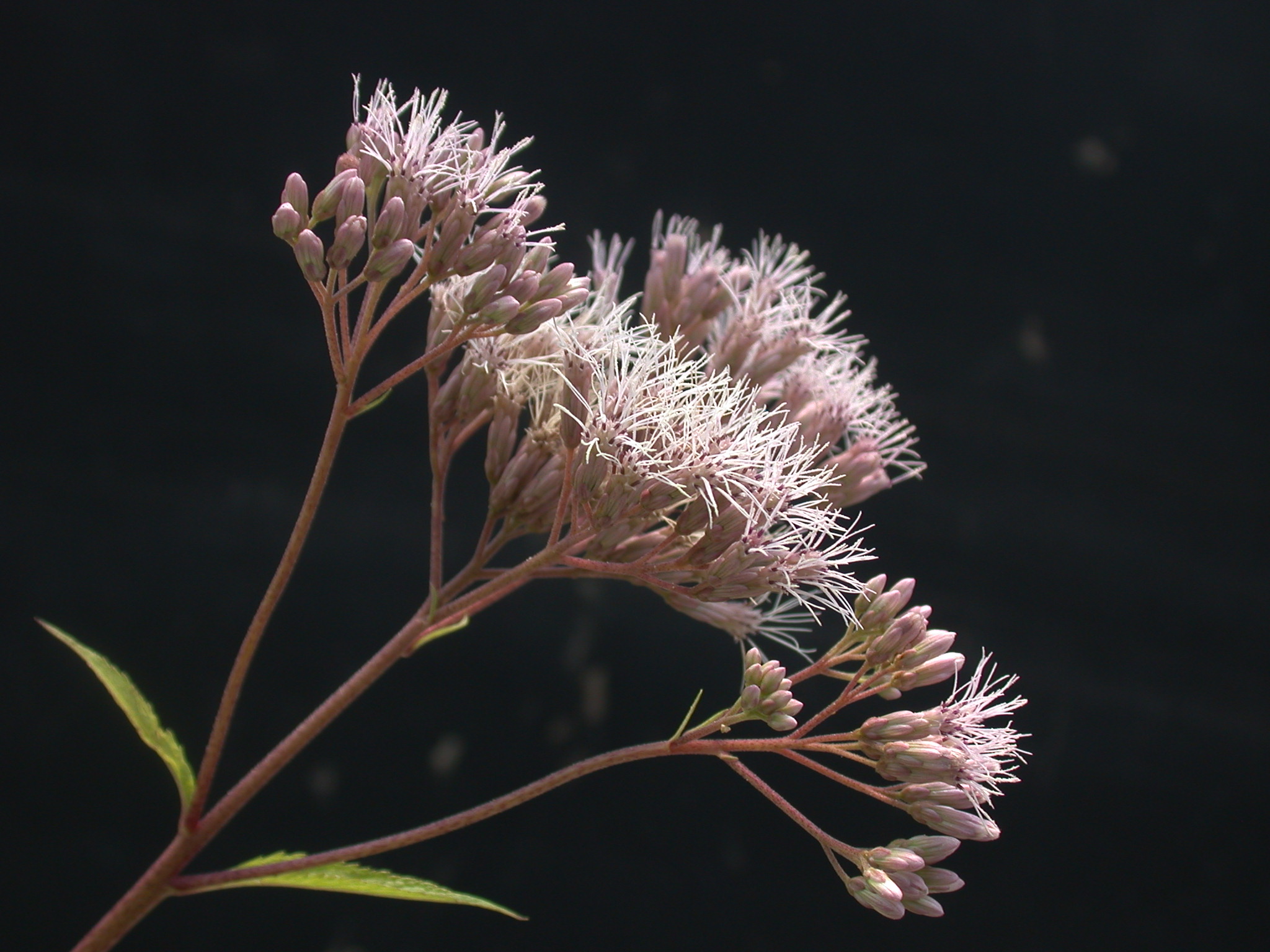
Joepyeweed flowers.
